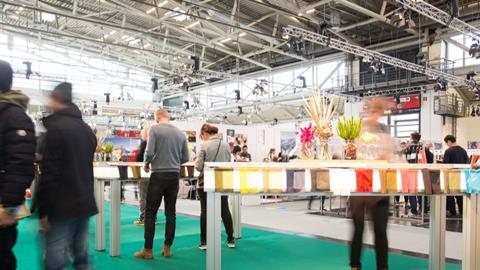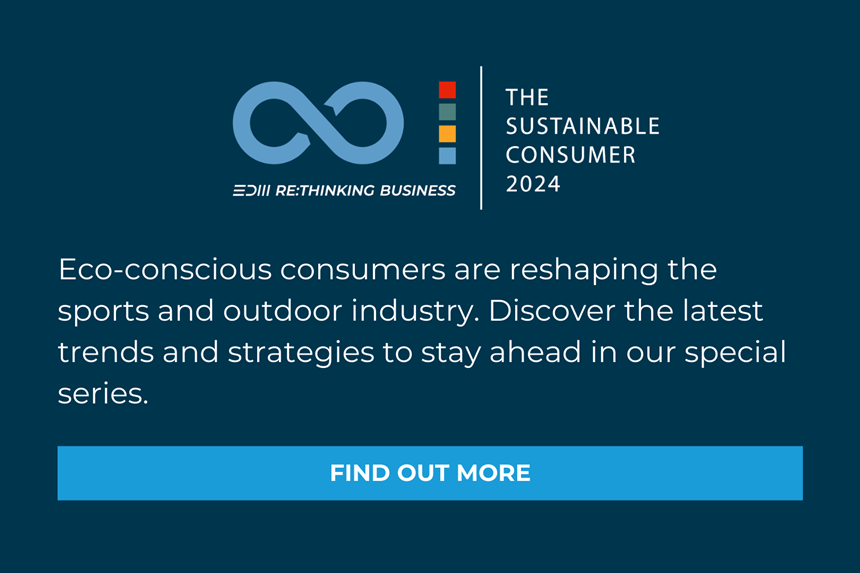Exhibitions need something to get people to turn up in person now that we have all lived in the virtual world of Zoom and Teams; fortunately, the Outdoor Industry is focused on apparel, and there is nothing stronger than getting to handle the garment / see the finish / try the fit / realize how the color scheme can be best displayed.
The shift-around of the (ISPO and OR) retailer exhibitions to earlier dates has also moved the specialized ingredient sourcing shows forward. Since Performance Days (PD) started 14 years ago, the demand for this show has grown as it offers the chance for the designers and fabric developers to concentrate on what interests them (as opposed to having to be around their own brand stand to help out with technical explanations for visitors). Performance Days started with a room in Munich; now it has two shows a year at the Messe München exhibition center; plus a partnership in the U.S.: there are two Functional Fabric Fairs (FFF) in the cultural home of the sports industry, Portland, as well as one for the athleisure industry in New York City. And (when virus restrictions allow), there will be FFF Shanghai.
FFF Portland is at the start of the first complete week of April. In contrast, Performance Days in Munich will be in the last week of that month, repeating the sequence of the autumn exhibitions (the Oregon show went ahead with record attendance, but Bavaria had to be switched to digital after a local Covid spike). PD started as a project by Marco Weichert when he realized that hosting an event made it more time-efficient for those creating the product to see a wider range of suppliers at the same time. By inviting only those to have stands that follow best practice, the exhibition concentrates on quality over quantity. This has been popular with the visitors as plans to see everyone can be achieved.
The format of the show is to have a Fabric Forum, which not only displays the best of the fabrics on show but also introduces the theme of the event (The Journey to Carbon Neutrality); this also gets exposure in the second area of concentration – the Presentation Stage – which hosts suitable talks ranging from new product development talks to panels on the issues facing the industry. Recently the jury met to select which of the 800 fabrics submitted were worthy of highlighting in the Forum area. These allow rival fabrics to be held in hands at the same time so that the all-important tactile qualities can be appreciated.
Whereas bio-plastics (polymers from crops like PLA from food cultivation) formed the theme of the autumn shows (the talks are all online for playback), the new direction is working towards a nirvana: to have every fabric with a carbon footprint detailed alongside its other features. If the yarn is processed using renewable energy instead of coal-fired power stations – the difference will be easy to identify. Is polyester better on footprints than polypropylene or polyamides? How different is cellulose as a fiber? This is a big shift to the industry way of presenting materials, so it will form the direction for several shows to allow all the exhibitors to adopt this new practice. The incoming exhibitions have been partnered by the Higg Index as their Material Sourcing Index is the default option of how to work this out. As with any audit system, it is important to know how to use it effectively and efficiently, so several of the presentations will delve deeper into the subject, as will the supporting information in the Fabric Forum.
The jury decided the winners of the categories (ranging from baselayers to 3-layer shells via insulation and downproof, even workwear and accessories). There are two top awards – for performance and environmental practice. Much progress has been made recently in this latter area in terms of natural ingredients – Patagonia, The North Face, Timberland, HD Wool and Raddis cotton have championed ReGenerative Agriculture (crops that sequester more carbon into the ground than the lifecycle of the item produces) which has shaken thinking in the industry (it has the potential to demonstrate how apparel can be carbon negative!).
The current winners of the Fabric Forum Awards are as dynamic a shift as the above, but you need to turn up to the show to find out who the prizes went to. It can be revealed that there is a new source of recycled polyamide: the ropes that oysters are grown on in Taiwan. New recycling technology is now also allowing mixed fabrics to be reprocessed; these blends allow for a stronger physical and emotional durability to be created in the original garment.
The other attraction for the American show is that the Struktur Society has come together again. Michelle Rose was the co-founder of the gathering for those from the Creative and Design Industries, with a workshop series that starts in the Halls on April 5 and then moves downtown the following day for a fuller conference. There is no European equivalent that makes design teams dream now that Innovation-for-the-Extremes no longer happens.

Photo: © Performance Days








